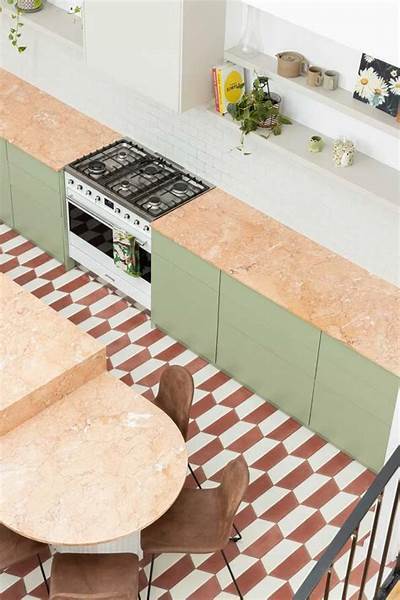Modern Home Interior Design: A Comprehensive Guide
Modern home interior design is more than just a fleeting trend; it's a philosophy reflecting a minimalist aesthetic, functional layouts, and a focus on clean lines and natural light. This guide delves into the key elements that define modern design, offering insights into creating a stylish and comfortable living space that stands the test of time.
Key Principles of Modern Interior Design
Modern design prioritizes simplicity and functionality over ornamentation. Clutter is minimized, and every piece of furniture serves a purpose. The overall feeling is one of spaciousness and serenity. Here are some core principles:
Minimalism: Less is More
Minimalism is the cornerstone of modern design. This doesn't mean stark emptiness, but rather a curated selection of essential pieces. Avoid excessive decoration and focus on quality over quantity. Choose furniture with clean lines and simple silhouettes, avoiding overly ornate details.
Neutral Color Palettes: Creating a Calm Atmosphere
Modern interiors often utilize a neutral color palette as a base. Think whites, greys, beiges, and blacks. These colors create a sense of calm and allow other elements, such as artwork or textiles, to stand out. Accents of bolder colors can be introduced strategically to add personality without overwhelming the space.
Natural Light: Maximizing Brightness and Airiness
Natural light is crucial in modern design. Maximize natural light by using sheer curtains or blinds that allow ample light to filter through. Large windows are highly desirable, but even smaller windows can be maximized with strategically placed mirrors to reflect light deeper into the room.
Open Floor Plans: Enhancing Space and Flow
Open floor plans are a hallmark of modern homes. Breaking down walls between living areas creates a sense of spaciousness and allows for seamless flow between different functions. This design choice promotes interaction and a feeling of openness.
Functional Furniture: Form Follows Function
Furniture in modern design is both aesthetically pleasing and highly functional. Each piece serves a clear purpose, and there's a deliberate absence of unnecessary ornamentation. Multi-functional furniture, such as ottomans with storage, is frequently utilized to maximize space and efficiency.
Material Choices in Modern Design
The materials used play a significant role in creating the desired aesthetic. Modern design often incorporates natural materials for a sense of warmth and authenticity, while also embracing sleek, modern materials for a contemporary feel.
Natural Materials: Bringing the Outdoors In
Wood, stone, and concrete are popular choices in modern interiors. These materials add texture and warmth, counterbalancing the clean lines of the furniture and architecture. Different types of wood, from light oak to darker walnut, can be used to create varied effects.
Sleek Modern Materials: Adding a Contemporary Edge
Glass, metal, and polished concrete also feature prominently in modern design. These materials add a contemporary edge and reflect light, enhancing the sense of spaciousness. Metal accents, such as sleek black metal legs on furniture, can add a touch of industrial chic.
Incorporating Technology and Smart Home Features
Modern design often seamlessly integrates technology and smart home features. This integration enhances convenience and creates a more connected living environment.
Smart Lighting: Setting the Mood and Enhancing Energy Efficiency
Smart lighting systems allow for customized lighting schemes, enhancing mood and energy efficiency. Automated lighting can be programmed to adjust throughout the day, mimicking natural light patterns.
Smart Appliances: Streamlining Daily Tasks
Smart appliances, such as refrigerators with built-in screens and voice-activated ovens, simplify daily tasks and add a futuristic touch to the kitchen.
Home Automation Systems: Centralized Control
Home automation systems allow for centralized control of lighting, temperature, security, and entertainment systems, enhancing convenience and security.
Different Styles Within Modern Design
While modern design shares core principles, several distinct styles exist within the broader category.
Mid-Century Modern: A Classic Approach
Mid-century modern design, popularized in the mid-20th century, emphasizes clean lines, organic shapes, and a blend of natural and manufactured materials. Think iconic Eames chairs and warm wood tones.
Scandinavian Modern: Light and Airy Aesthetics
Scandinavian modern design prioritizes functionality, simplicity, and natural light. It utilizes a predominantly light color palette, often incorporating natural materials such as wood and wool.
Industrial Modern: Raw and Refined
Industrial modern incorporates raw materials such as exposed brick, metal piping, and concrete. It combines industrial elements with sleek modern furniture to create a unique and edgy aesthetic.
Minimalist Modern: The Essence of Simplicity
Minimalist modern design takes the principles of minimalism to an extreme, focusing on essential furnishings and a predominantly neutral color palette. Clutter is completely eliminated, creating a serene and peaceful atmosphere.
Conclusion
Modern home interior design offers a versatile and adaptable approach to creating a stylish and functional living space. By understanding the core principles and exploring different styles within the modern aesthetic, you can create a home that reflects your personal style and enhances your daily life. Remember that the key is to create a space that is both beautiful and functional, reflecting your personal taste while embracing the timeless elegance of modern design.


この記事へのコメント